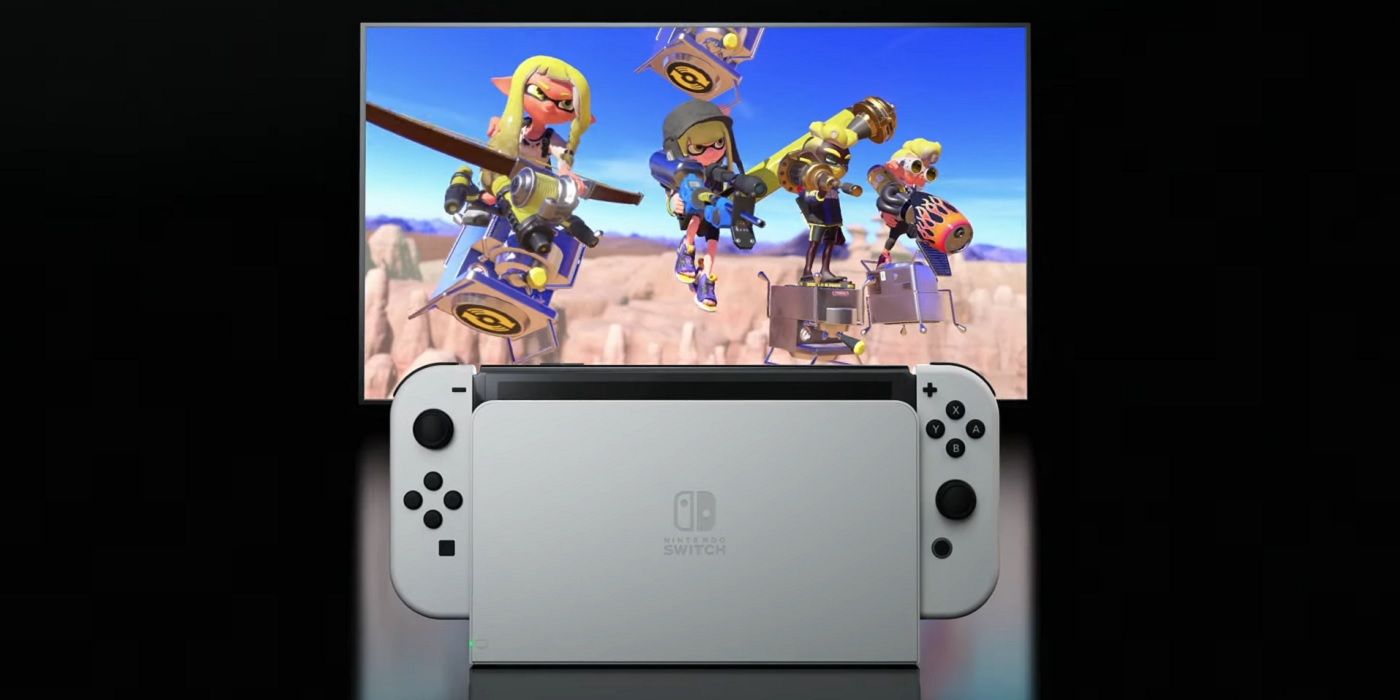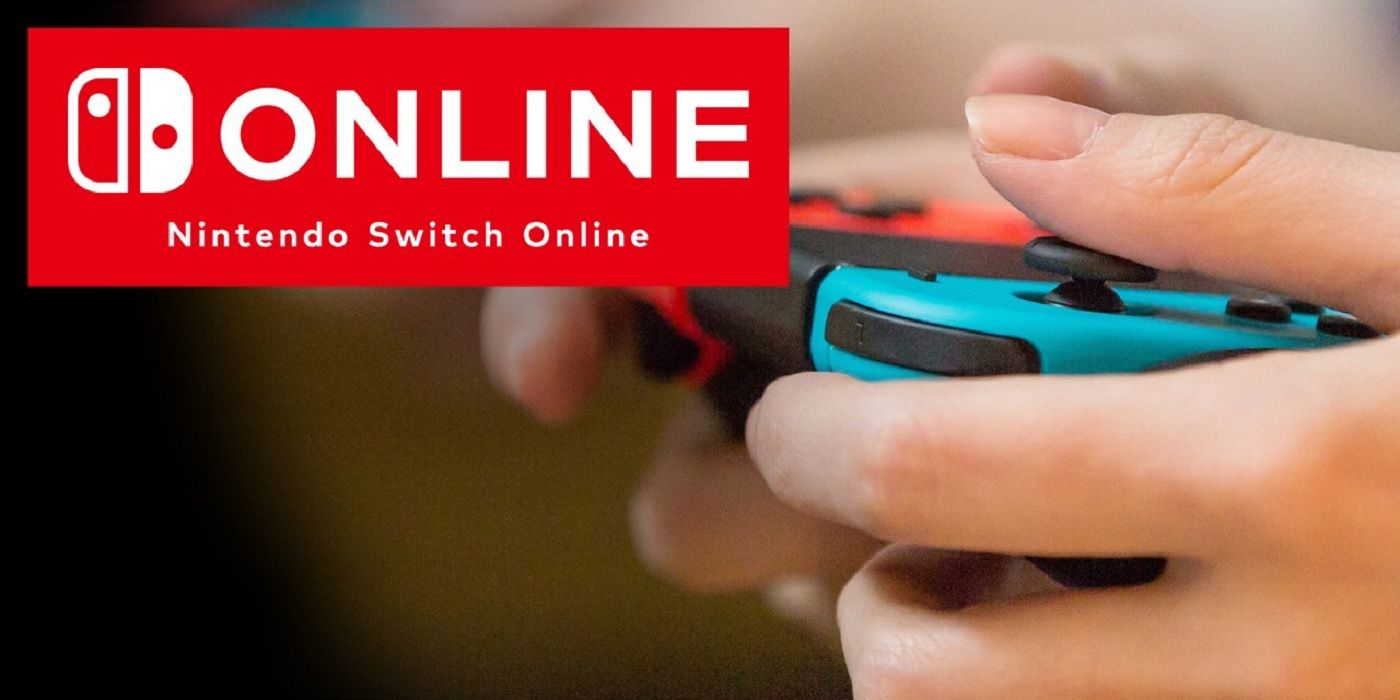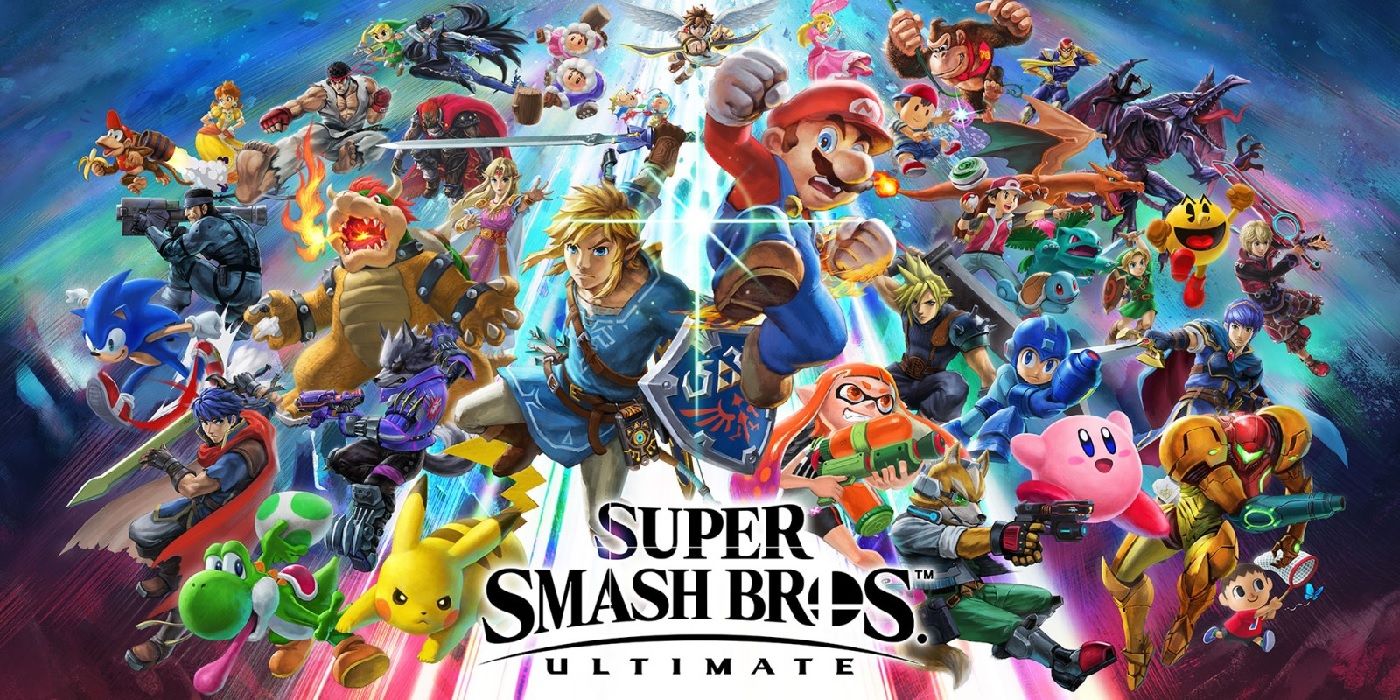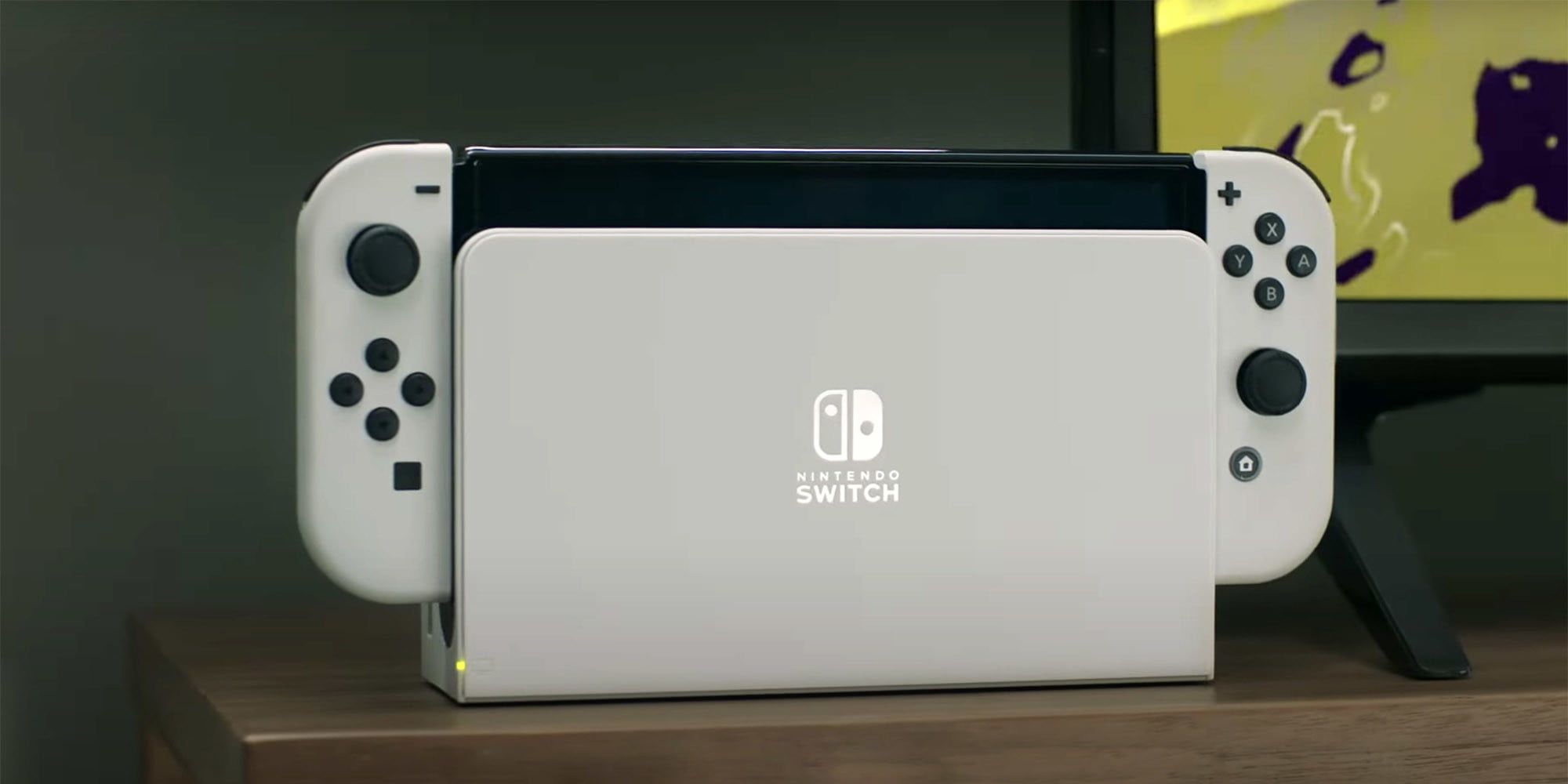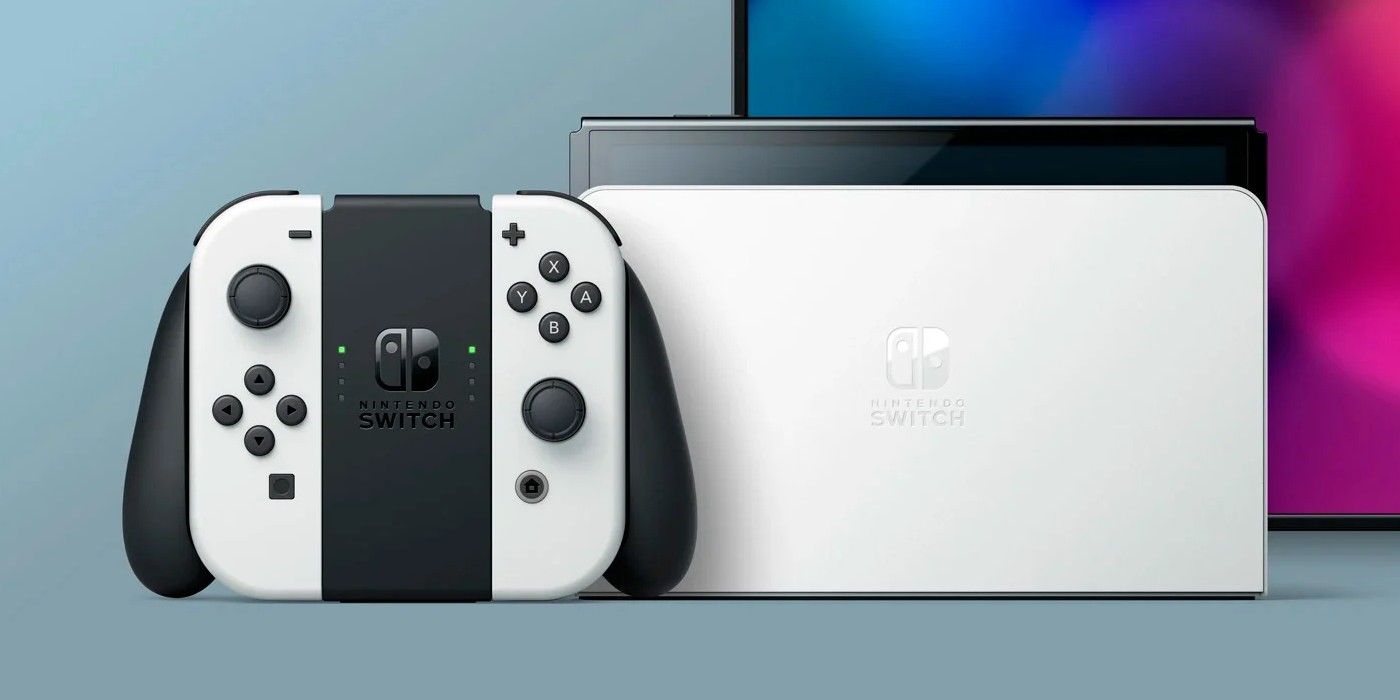After months of rumors, Nintendo officially confirmed that it will be producing a new Nintendo Switch model titled the Nintendo Switch OLED this October. The biggest feature will be the new 7-inch OLED screen which will bring vivid colors and crisp contrast when playing in handheld mode. However, Nintendo also announced that the Nintendo Switch OLED would come with a dock that includes a wired LAN port.
Since the release of the original Nintendo Switch, fans have been asking for wired LAN support, and this will hopefully address some of the stability issues of games like Super Smash Bros. Ultimate. Although a wired ethernet adapter has been available for some time now, the Nintendo Switch OLED will have it hardwired into the dock. While this is a nice change for fans looking to get a new Nintendo Switch, it unfortunately won't fix Nintendo's poor online experience.
Nintendo Switch's Online Experience
Over the years, the Nintendo Switch has been criticized for its poor online experience. Games like Super Smash Bros. Ultimate, Splatoon 2, and Mario Kart 8 Deluxe have had their fair share of stability issues when playing online. In fact, the problems extend beyond netcode, as players have also found it difficult to setup games with their friends. For example, in games like Pokemon Sword/Shield where a perfect connection isn't required, there are still issues with creating lobbies and searching for a particular player. Nintendo Switch Online doesn't integrate friend lists into its games, and this can be a hassle when looking to play with friends.
Of course, if this was the only issue with Nintendo Switch's online experience, then it would not be a big deal. However, the Nintendo Switch also has serious issues with netcode, and for competitive games like Super Smash Bros. Ultimate, this can be a huge setback for players looking to improve. Many Nintendo Switch games use a peer-to-peer architecture called Pia for online play. Although there's a common misconception that P2P architectures cause lag or latency, the reality is that the Nintendo Switch has a poor implementation of netcode. While dedicated servers could theoretically improve smoothness, there are inherent issues in how the netcode is being executed.
Delay-Based Netcode vs Rollback Netcode
Perhaps the most infamous issue with the Nintendo Switch's online play is in Super Smash Bros. Ultimate, which uses a delay-based netcode. Latency in online Super Smash Bros. Ultimate matches is frequent, and this is largely due to the delay-based netcode that the game employs. The basic idea behind delay-based netcode is that if a remote players' inputs are arriving late due to network conditions, the game will artificially delay the local user's inputs by the same amount of time. Although there are ways to mitigate the effect of the delay, the inconsistency in networks mean that the game cannot proceed without information from both players. As a result, extended freezes during poor network conditions become possible.
The other approach would be rollback netcode, an approach that will simulate or predict upcoming frame inputs and "rolls back" to the correct input if there are networking delays. When the remote inputs come in, it's likely that the game will have already shown a different result on the screen. However, rollback netcode will rewind the simulation, apply the correct input, and immediately show the result to the player. Essentially, the game might be showing slightly different things to the players but will correct itself once the inputs have been received. Although Nintendo has considered rollback netcode for Super Smash Bros. Ultimate, it was passed on for allegedly having too many side effects.
Nintendo Switch OLED's Ethernet Port Doesn't Fix The Core Problem
While it is reasonable to assume that there are stability problems with using a Wi-Fi connection on the Nintendo Switch, there's no way that a built-in Ethernet port will address the overall connectivity issues. Games like Super Smash Bros. Ultimate that are built on delay-based netcode are fundamentally flawed in preventing latency or lag. Given the popularity of the game as an eSport, it's reasonable to expect that most professional and semi-professional players have already acquired an Ethernet port adapter at some point. Though it will undoubtedly smooth out some of the less stable connections, much of the problem still remains server-side.
Part of the issue lies in the Nintendo Switch's limited hardware. Of course, it's unreasonable to expect CS:GO or Overwatch levels of tick-rate given that the Switch can't even support the types of framerates that PC can. On the other hand, there's no reason that Nintendo can't get rid of an archaic system like delay-based netcode when so many modern fighting games implement rollback netcode. Furthermore, Nintendo could easily invest in dedicated servers in conjunction with improving implementation of the networking code. While this is only speculation, it does seem to be a conscious choice to save on development costs. Marketing a built-in Ethernet port also feels like a way to sidestep the issue, placing blame on players' Internet instead.
The Future of Nintendo Switch's Online Play
At this point, the reveal of the Nintendo Switch OLED seems to indicate that Nintendo has no plans to address the connectivity and netcode issues within its games. The Ethernet port will undoubtedly improve players' connection quality, but there are fundamental flaws in how the online experience is designed. One positive thing that Nintendo has done is that it has begun shifting towards the NPLN multiplayer service system instead of the antiquated NEX system that was previously used in games like Splatoon 2. However, whether these changes will be meaningful remains to be seen.
In a lot of ways, the new Ethernet port on the Nintendo Switch OLED is overhyped for what it actually brings to the table. All of the players who actually needed an Ethernet connection will have likely acquired an adapter long ago. A built-in Ethernet port is convenient, but it's doubtful that it will address the large number of connectivity issues that have plagued the Nintendo Switch since its inception. The Nintendo Switch OLED makes better network connections more accessible, but that doesn't necessarily mean that it addresses the core problem.
The Nintendo Switch OLED releases on October 8, 2021, worldwide.

